-
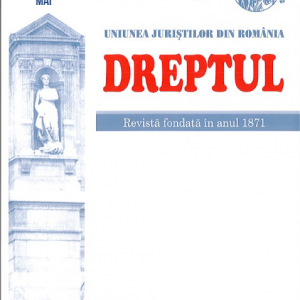 What seems relevant to this study highlight is the current trend of Europeanization guarantees the right to a fair trial in civil matters established by art. 6, paragraph 1 of the Convention for the Protection of Human Rights and Fundamental Freedoms and relativization constitutional provisions to guarantee this right, from the perspective of European Court of Human Rights. With this approach, the study proposed open a complex and complete vision, but not exhaustive approach guarantees within the current right to a fair trial in civil matters. Following an outline Key – are analyzed successively three major parts of the study, namely, 1. Identification of universal standards and regulations contained in the European human rights and, of Romanian constitutional and legal regulations on the right to a fair trial in civil matters. 2. Doctrinal guidelines on the requirements of the right to a fair trial in civil matters. 3. Jurisprudential guidelines on the requirements of the right to a fair trial in civil matters.
What seems relevant to this study highlight is the current trend of Europeanization guarantees the right to a fair trial in civil matters established by art. 6, paragraph 1 of the Convention for the Protection of Human Rights and Fundamental Freedoms and relativization constitutional provisions to guarantee this right, from the perspective of European Court of Human Rights. With this approach, the study proposed open a complex and complete vision, but not exhaustive approach guarantees within the current right to a fair trial in civil matters. Following an outline Key – are analyzed successively three major parts of the study, namely, 1. Identification of universal standards and regulations contained in the European human rights and, of Romanian constitutional and legal regulations on the right to a fair trial in civil matters. 2. Doctrinal guidelines on the requirements of the right to a fair trial in civil matters. 3. Jurisprudential guidelines on the requirements of the right to a fair trial in civil matters. -
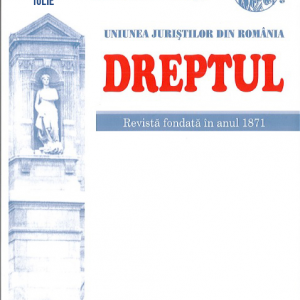 Recently (re)invented (2005) by the Italian and North American law schools, quickly developed and initially submitted as a „science a little bizarre” (J.-B. Auby, 2007), the global administrative law is one of the legal results of the phenomenon of globalization. Introducing an increasing porosity of the borders, and also a considerable development of the functions of the non-state actors, increasingly diverse and numerous, globalization creates new phenomena of adjustment, involved in the development of transparency and that contribute to the accountability of each intervener on the supranational stage. This is the background of the emergence of a global administrative law, based on a new and systematic analysis of the supra- and trans- national phenomena, mostly heteroclite in appearance. In only a decade, around these precepts, an authentic school of thought has been crystallized, developed especially in common law doctrine, less exploited in French doctrine, and its presence finding its beginning in the Romanian doctrine by this study.
Recently (re)invented (2005) by the Italian and North American law schools, quickly developed and initially submitted as a „science a little bizarre” (J.-B. Auby, 2007), the global administrative law is one of the legal results of the phenomenon of globalization. Introducing an increasing porosity of the borders, and also a considerable development of the functions of the non-state actors, increasingly diverse and numerous, globalization creates new phenomena of adjustment, involved in the development of transparency and that contribute to the accountability of each intervener on the supranational stage. This is the background of the emergence of a global administrative law, based on a new and systematic analysis of the supra- and trans- national phenomena, mostly heteroclite in appearance. In only a decade, around these precepts, an authentic school of thought has been crystallized, developed especially in common law doctrine, less exploited in French doctrine, and its presence finding its beginning in the Romanian doctrine by this study. -
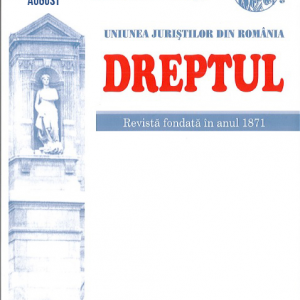 In this study the author develops and substantiates the thesis according to which under reign of King Carol I (1866-1914), despite the clear purports of the Romanian Constitution of 1866 (inspired by the Belgian Constitution of 1831), in reality, illa tempore, there was no real democracy in Romania, a real representative government, but political and constitutional life was dominated, de facto, by moderate monarchical authoritarianism of King Carol I, King who was concerned to impose a personal direction in domestic and foreign policy of the country, with the view to render functional mechanisms of the young Romanian state, and that even at the expense of sacrificing real democracy and the parliamentary regime, proclaimed by the Romanian Constitution of 1866.
In this study the author develops and substantiates the thesis according to which under reign of King Carol I (1866-1914), despite the clear purports of the Romanian Constitution of 1866 (inspired by the Belgian Constitution of 1831), in reality, illa tempore, there was no real democracy in Romania, a real representative government, but political and constitutional life was dominated, de facto, by moderate monarchical authoritarianism of King Carol I, King who was concerned to impose a personal direction in domestic and foreign policy of the country, with the view to render functional mechanisms of the young Romanian state, and that even at the expense of sacrificing real democracy and the parliamentary regime, proclaimed by the Romanian Constitution of 1866. -
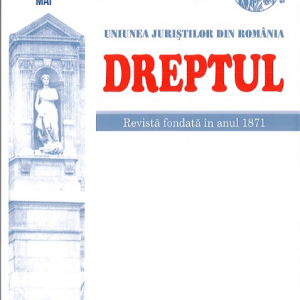 In the general context of the biodiversity preservation and of the protection of nature, an important issue shall remain that related to the animals’ rights, as a way of defense and preservation of this essential component of biodiversity. The author reveals that recognizing and guaranteeing these rights shall remain, however, a process in full development, extremely difficult and complex, which supposes to take into consideration certain different values: ethical, biological, environmentally friendly, legal, and so on. Its current stage of development is the result of certain overlong evolutions, is characterized by certain aspects and expresses a series of trends of future developments. However, the continuous and most of the times improvised adjustments and readjustments feed the legislative chaos and implicitly, a contradictory case law in the matter.
In the general context of the biodiversity preservation and of the protection of nature, an important issue shall remain that related to the animals’ rights, as a way of defense and preservation of this essential component of biodiversity. The author reveals that recognizing and guaranteeing these rights shall remain, however, a process in full development, extremely difficult and complex, which supposes to take into consideration certain different values: ethical, biological, environmentally friendly, legal, and so on. Its current stage of development is the result of certain overlong evolutions, is characterized by certain aspects and expresses a series of trends of future developments. However, the continuous and most of the times improvised adjustments and readjustments feed the legislative chaos and implicitly, a contradictory case law in the matter. -
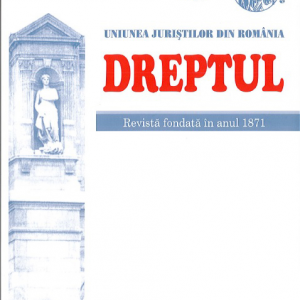 As compared to the former civil enactment which established a special immovable property privilege of architects, entrepreneurs, stonemen and other workers employed to build, rebuild or repair edifices, canals or other works, the new Romanian Civil Code provides a legal real estate mortgage for architects and entrepreneurs who have agreed with the owner to build, rebuild or repair a building. Beyond a slight restriction of the scope of application, the Romanian legislator has opted for a simplification of the conditions of recognition of the legal guarantee, which is praiseworthy and useful for the practice. However, the lapidary drafting of the normative texts does not provide answers to all the questions that the practitioners may ask themselves. The author has attempted in this paper to provide an image as accurate as possible of these questions, with the mention that the most important is the need for a fast answer (from the legislator or from the doctrine) to the question whether this legal mortgage guarantees only the payment of some amounts of money or also of any other type of claim which could represent the price of works contract. The issue essentially and immediately affects the scope of application of the guarantee and, consequently, a solution is required in order to ensure the predictability necessary for the economic circuit.
As compared to the former civil enactment which established a special immovable property privilege of architects, entrepreneurs, stonemen and other workers employed to build, rebuild or repair edifices, canals or other works, the new Romanian Civil Code provides a legal real estate mortgage for architects and entrepreneurs who have agreed with the owner to build, rebuild or repair a building. Beyond a slight restriction of the scope of application, the Romanian legislator has opted for a simplification of the conditions of recognition of the legal guarantee, which is praiseworthy and useful for the practice. However, the lapidary drafting of the normative texts does not provide answers to all the questions that the practitioners may ask themselves. The author has attempted in this paper to provide an image as accurate as possible of these questions, with the mention that the most important is the need for a fast answer (from the legislator or from the doctrine) to the question whether this legal mortgage guarantees only the payment of some amounts of money or also of any other type of claim which could represent the price of works contract. The issue essentially and immediately affects the scope of application of the guarantee and, consequently, a solution is required in order to ensure the predictability necessary for the economic circuit. -
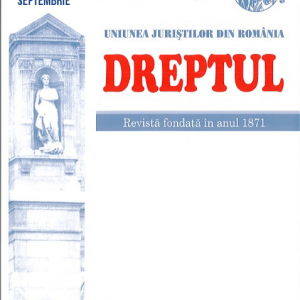 The court having territorial jurisdiction to trial the parole requests, the requests for the amendment of sentencing enforced by final judgments, the requests for interruption of the execution of prison sentence, the appeals to the execution filed by convicts in detention, as well as appeals lodged by prisoners against the hearing reports of the appointed judge for the execution of sentences, is set under the provisions of Article 449 para. (2), 450 para. (1), 456, 460 para. (1) and (6), 461 para. (2) of the Code of Criminal Procedure and Article 25 para. (6), 74 para. (5) and 77 para. (3) of Law No. 275/2006 on the execution of punishments and measures ordered by the judiciary in criminal proceedings. Sector 4 Bucharest Court, judging claims like the ones mentioned above, lodged by prisoners in the penitentiaries Bucureºti Jilava and Spital Jilava - prisons that are not located within its jurisdiction - pursuant to the Order of the Minister of Justice No. 1279/C/2000, administrative regulation not published in the “Official Gazette of Romania” and issued pursuant to a statutory provision, currently expressly repealed, breached the laws of jurisdiction, assuming a jurisdiction that, legally, falls upon other court. Also, on account of the Bucharest Court judging, in the first instance, as Court of execution, requests made by prisoners in the same prisons, after November 1st, 2011, date on which Ilfov Tribunal started to operate, had violated the legal rules governing its territorial jurisdiction.
The court having territorial jurisdiction to trial the parole requests, the requests for the amendment of sentencing enforced by final judgments, the requests for interruption of the execution of prison sentence, the appeals to the execution filed by convicts in detention, as well as appeals lodged by prisoners against the hearing reports of the appointed judge for the execution of sentences, is set under the provisions of Article 449 para. (2), 450 para. (1), 456, 460 para. (1) and (6), 461 para. (2) of the Code of Criminal Procedure and Article 25 para. (6), 74 para. (5) and 77 para. (3) of Law No. 275/2006 on the execution of punishments and measures ordered by the judiciary in criminal proceedings. Sector 4 Bucharest Court, judging claims like the ones mentioned above, lodged by prisoners in the penitentiaries Bucureºti Jilava and Spital Jilava - prisons that are not located within its jurisdiction - pursuant to the Order of the Minister of Justice No. 1279/C/2000, administrative regulation not published in the “Official Gazette of Romania” and issued pursuant to a statutory provision, currently expressly repealed, breached the laws of jurisdiction, assuming a jurisdiction that, legally, falls upon other court. Also, on account of the Bucharest Court judging, in the first instance, as Court of execution, requests made by prisoners in the same prisons, after November 1st, 2011, date on which Ilfov Tribunal started to operate, had violated the legal rules governing its territorial jurisdiction. -
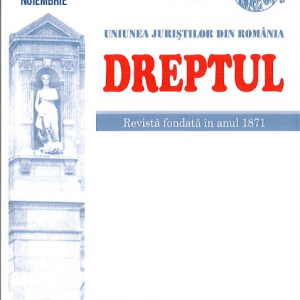 The examination of the constitutionality of the Government Emergency Ordinance no. 134/2005 has significant implications as regards the legality of the activity of one of the fundamental institutions of the State, which was established for the discovery and punishment of corruption actions. The authors intend to bring clarifications regarding this matter and the need to remove any doubts regarding the complete constitutionality of the AntiCorruption General Directorate.
The examination of the constitutionality of the Government Emergency Ordinance no. 134/2005 has significant implications as regards the legality of the activity of one of the fundamental institutions of the State, which was established for the discovery and punishment of corruption actions. The authors intend to bring clarifications regarding this matter and the need to remove any doubts regarding the complete constitutionality of the AntiCorruption General Directorate. -
 What we intended on this occasion is to discuss the rules that are used to determine in the concrete situations, related to the case, the legal inheritors of de cuius and the meanings of these rules. The topic seems interesting to us, because on the way in which it is dealt with, on the answers given to some questions, which are raised or can be raised in this regard, depend the adequate theoretical perspective and the rigor of determining of the inheritors in a given case, not only of the lawful ones, but also of the testamentary successors, each category of heirs being able, either alone or with the other, to access the inheritance.
What we intended on this occasion is to discuss the rules that are used to determine in the concrete situations, related to the case, the legal inheritors of de cuius and the meanings of these rules. The topic seems interesting to us, because on the way in which it is dealt with, on the answers given to some questions, which are raised or can be raised in this regard, depend the adequate theoretical perspective and the rigor of determining of the inheritors in a given case, not only of the lawful ones, but also of the testamentary successors, each category of heirs being able, either alone or with the other, to access the inheritance. -
 The momentary transformations taking place in the Republic of Moldova have as objective to adjust the national legislation to the international standards, in which the way of solving the co-relation between the interests of the person and the State’s interests is made at optimum level. Contradictoriality has a special importance on the whole part of the criminal procedure system, determining, in many directions, the weight of the legal status, the relations of opposition or collaboration between the participants in the criminal trial, as well as the legal relationships established between the participants in the trial and the court of law.
The momentary transformations taking place in the Republic of Moldova have as objective to adjust the national legislation to the international standards, in which the way of solving the co-relation between the interests of the person and the State’s interests is made at optimum level. Contradictoriality has a special importance on the whole part of the criminal procedure system, determining, in many directions, the weight of the legal status, the relations of opposition or collaboration between the participants in the criminal trial, as well as the legal relationships established between the participants in the trial and the court of law. -
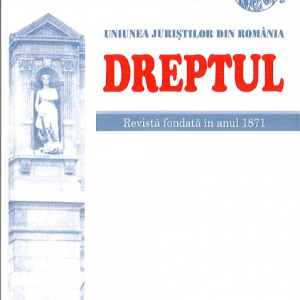 În luna martie 2010 doamna A.C.L. a achiziționat un autoturism marca Mercedes Benz 350 SL, din sumele primite donație de la părinții ei. Începând cu luna iulie a anului 20101, impozitul2 pentru mijloacele de transport3 s-a majorat semnificativ, dublându-și valoarea pentru autoturismele cu capacitate cilindrică mai mare de 3001 cm³. Autoturismul în cauză având o capacitate cilindrică de 3724 cm³, valoarea anuală a impozitului depășea 5 500 lei. Cum acesta depășea posibilitățile financiare ale doamnei A.C.L., aceasta a hotărât să înstrăineze autovehiculul, postând anunțuri pe site-urile de vânzări, precum și pe geamul lateral al autoturismului. În pofida acestor demersuri, nu a reușit să vândă autovehiculul în România din cauza cuantumului ridicat al impozitului anual, acumulând în continuare datorii la bugetul local. În cursul anului 2012 doamna A.C.L. s-a deplasat în Germania și la data de 27 noiembrie 2012 a reușit să înstrăineze autovehiculul către o societate din acest stat, al cărei obiect de activitate era comerțul cu autovehicule.
În luna martie 2010 doamna A.C.L. a achiziționat un autoturism marca Mercedes Benz 350 SL, din sumele primite donație de la părinții ei. Începând cu luna iulie a anului 20101, impozitul2 pentru mijloacele de transport3 s-a majorat semnificativ, dublându-și valoarea pentru autoturismele cu capacitate cilindrică mai mare de 3001 cm³. Autoturismul în cauză având o capacitate cilindrică de 3724 cm³, valoarea anuală a impozitului depășea 5 500 lei. Cum acesta depășea posibilitățile financiare ale doamnei A.C.L., aceasta a hotărât să înstrăineze autovehiculul, postând anunțuri pe site-urile de vânzări, precum și pe geamul lateral al autoturismului. În pofida acestor demersuri, nu a reușit să vândă autovehiculul în România din cauza cuantumului ridicat al impozitului anual, acumulând în continuare datorii la bugetul local. În cursul anului 2012 doamna A.C.L. s-a deplasat în Germania și la data de 27 noiembrie 2012 a reușit să înstrăineze autovehiculul către o societate din acest stat, al cărei obiect de activitate era comerțul cu autovehicule. -
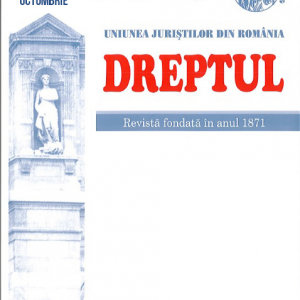 In this study, the author carried out an analysis of the provisions of Article 200 of the new (Romanian) Code of Civil Procedure, which thoroughly regulates the checking of the application for summons subsequent to the registration and adjustment thereof (should it not include all the necessary data).
In this study, the author carried out an analysis of the provisions of Article 200 of the new (Romanian) Code of Civil Procedure, which thoroughly regulates the checking of the application for summons subsequent to the registration and adjustment thereof (should it not include all the necessary data). -
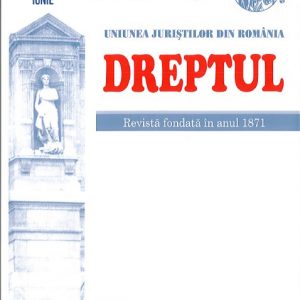 This study aims to both emphasize the specificity of employment law amidst other fields of law from Romania and also contribute to the promotion and support the thesis of its autonomy. The formula of conception and drafting of the paper privileged the development of a concrete and detailed analysis over the studies of several authors, regarding the question whether certain legal institutions, characterizing employment law, can be construed and applied in light of the contractualism principle, specific to civil law. Essentially, we argued that certain rights, belonging to workers, i.e. the rights regulated under the law and applicable collective labour agreements, are not negotiable in light of Article 38 of the Labour Code. In addition, we argued that the dismissal legal regime is imperative, thus forming part of „the public social order”, as French scholars define this concept. Consequently, this qualification impedes, from a legal standpoint, all waiver in relation to the employers’ obligations of invoking and proving the existence of a legal and valid dismissal ground.
This study aims to both emphasize the specificity of employment law amidst other fields of law from Romania and also contribute to the promotion and support the thesis of its autonomy. The formula of conception and drafting of the paper privileged the development of a concrete and detailed analysis over the studies of several authors, regarding the question whether certain legal institutions, characterizing employment law, can be construed and applied in light of the contractualism principle, specific to civil law. Essentially, we argued that certain rights, belonging to workers, i.e. the rights regulated under the law and applicable collective labour agreements, are not negotiable in light of Article 38 of the Labour Code. In addition, we argued that the dismissal legal regime is imperative, thus forming part of „the public social order”, as French scholars define this concept. Consequently, this qualification impedes, from a legal standpoint, all waiver in relation to the employers’ obligations of invoking and proving the existence of a legal and valid dismissal ground. -
 The new Criminal Code has introduced the imputability as essential feature of the offence. In the current meaning, imputability also includes guilt. Nevertheless, the legislator has mentioned also guilt as essential feature of the offence, together with imputability. The author analyzes to what extent the two essential features of the offence are complementary or exclude each other.
The new Criminal Code has introduced the imputability as essential feature of the offence. In the current meaning, imputability also includes guilt. Nevertheless, the legislator has mentioned also guilt as essential feature of the offence, together with imputability. The author analyzes to what extent the two essential features of the offence are complementary or exclude each other. -
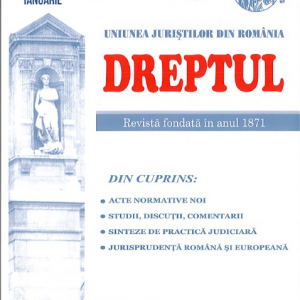 The paper aims to bring some clarifications regarding the typicality as an essential feature of the offence, as it is reflected in Article 15 of the Criminal Code. In fact, the paper begins by noticing that the typicality or providing the deed in the criminal law was the first of the essential features of the offence identified by the representatives of the Classical School. At the same time, it notes that, if initially typicality included only the objective requirements of the offence, now it is admitted to have a wider content, including both objective and subjective elements, as well as anti-judiciality elements. Through his study, the author brings some doctrinal explanations about the notion of typicality.
The paper aims to bring some clarifications regarding the typicality as an essential feature of the offence, as it is reflected in Article 15 of the Criminal Code. In fact, the paper begins by noticing that the typicality or providing the deed in the criminal law was the first of the essential features of the offence identified by the representatives of the Classical School. At the same time, it notes that, if initially typicality included only the objective requirements of the offence, now it is admitted to have a wider content, including both objective and subjective elements, as well as anti-judiciality elements. Through his study, the author brings some doctrinal explanations about the notion of typicality. -
 The law amending and supplementing the Law No 254/2013, a law which has not been promulgated and has not entered into force, has been through a controversial legislative process, involving the disregarding by the legislative power of the effects specific to the decisions of the Constitutional Court, pronounced before the enactment of the laws, assisting in the delivery of three decisions of the Court with regard to the same law, by two of them being established the unconstitutionality of the law as a whole. Finally, as a result of the cessation by law of the legislative process, the only possibility of the legislative power to regulate the regime of home detention is represented by the start of a new legislative approach, this time in compliance with the principle of bicameralism. At the same time, the intrinsic analysis of the provisions regarding the regime of home detention has resulted in the identification of legislative gaps, of the lack of clarity of the legal nature of the institution, of the lack of precision and predictability in the process of applying the regime of home detention, as well as in the identification of numerous cases of legislative parallelism. In compliance with the legislative will to establish the regime of execution of the imprisonment sentence at home, the results of the intrinsic analysis have led to the formulation of some de lege ferenda proposals regarding the regulation of the regime of detention at home, by amending Law No 254/2013.
The law amending and supplementing the Law No 254/2013, a law which has not been promulgated and has not entered into force, has been through a controversial legislative process, involving the disregarding by the legislative power of the effects specific to the decisions of the Constitutional Court, pronounced before the enactment of the laws, assisting in the delivery of three decisions of the Court with regard to the same law, by two of them being established the unconstitutionality of the law as a whole. Finally, as a result of the cessation by law of the legislative process, the only possibility of the legislative power to regulate the regime of home detention is represented by the start of a new legislative approach, this time in compliance with the principle of bicameralism. At the same time, the intrinsic analysis of the provisions regarding the regime of home detention has resulted in the identification of legislative gaps, of the lack of clarity of the legal nature of the institution, of the lack of precision and predictability in the process of applying the regime of home detention, as well as in the identification of numerous cases of legislative parallelism. In compliance with the legislative will to establish the regime of execution of the imprisonment sentence at home, the results of the intrinsic analysis have led to the formulation of some de lege ferenda proposals regarding the regulation of the regime of detention at home, by amending Law No 254/2013. -
 Article 913 of the Civil Procedure Code regulates two situations in which the court executor will establish the existence of an impediment to enforcement: when the minor himself categorically refuses to leave the debtor, respectively when the minor has aversion to the creditor. Faced with either of the two hypotheses, the court executor will not put pressure on the minor (he will not use force, he will not abuse him), but he will draw up an official report, which he will communicate to the parties and to the representative of the General Directorate of Social Assistance and Child Protection, which will notify the competent court (the guardianship and family court) to order a psychological counselling programme appropriate to the child’s age as a protection measure necessary to avoid the child’s subsequent refusal on enforcement. The child who has reached the age of 10 will be mandatorily heard. According to the law, the psychological counselling programme can not exceed 3 months. After an initial psychological assessment of the child, the psychologist appointed by the court will determine the duration and content of the psychological counselling programme. Upon the completion of the psychological counselling programme ordered by the guardianship court, the psychologist draws up a report which he communicates to the court, to the court executor and to the General Directorate of Social Assistance and Child Protection. Whereas the starting point for the new regulation was represented by the presumption that the minor’s going through the counselling programme will lead to the change of attitude towards the creditor of the obligation, after receiving the report drawn up by the psychologist, the court executor will resume the procedure of enforcement, under the terms of Article 911 of the Civil Procedure Code, therefore in the presence of a representative of the General Directorate of Social Assistance and Child Protection and, if the latter considers it necessary, of a psychologist, and he may benefit, when necessary, from the assistance of the public force agents.
Article 913 of the Civil Procedure Code regulates two situations in which the court executor will establish the existence of an impediment to enforcement: when the minor himself categorically refuses to leave the debtor, respectively when the minor has aversion to the creditor. Faced with either of the two hypotheses, the court executor will not put pressure on the minor (he will not use force, he will not abuse him), but he will draw up an official report, which he will communicate to the parties and to the representative of the General Directorate of Social Assistance and Child Protection, which will notify the competent court (the guardianship and family court) to order a psychological counselling programme appropriate to the child’s age as a protection measure necessary to avoid the child’s subsequent refusal on enforcement. The child who has reached the age of 10 will be mandatorily heard. According to the law, the psychological counselling programme can not exceed 3 months. After an initial psychological assessment of the child, the psychologist appointed by the court will determine the duration and content of the psychological counselling programme. Upon the completion of the psychological counselling programme ordered by the guardianship court, the psychologist draws up a report which he communicates to the court, to the court executor and to the General Directorate of Social Assistance and Child Protection. Whereas the starting point for the new regulation was represented by the presumption that the minor’s going through the counselling programme will lead to the change of attitude towards the creditor of the obligation, after receiving the report drawn up by the psychologist, the court executor will resume the procedure of enforcement, under the terms of Article 911 of the Civil Procedure Code, therefore in the presence of a representative of the General Directorate of Social Assistance and Child Protection and, if the latter considers it necessary, of a psychologist, and he may benefit, when necessary, from the assistance of the public force agents. -
 The question of whether criminal liability can be engaged only in the case of the violation of a subjective right or whether it operates also when a simple legitimate interest is violated, without being enshrined as a subjective right, has always preoccupied the doctrine of civil law. The discussions were amplified on the background of the evolution of the law of the criminal civil liability, from a law oriented towards the sanctioning of the guilty perpetrator, to an indemnity law, increasingly inclined towards the interests of the victim who suffers from the unjust harming of his subjective rights, but also of the legitimate interests, those which, without being consecrated, cannot be tolerated by the legal order. The debate has become increasingly animated, in the context of the proliferation of claims that aspire to compensation, under the pressure of unprecedented diversification of human rights and fundamental freedoms, making traditional good morals increasingly relaxed. This explains the tendency of many modern codifications to include them in the broader concept of public order, as a component thereof. Even the French, known for their refusal, sometimes expressed manifestly, to adopt modern solutions, have agreed to reform their Civil Code, through the Ordinance on the reform of the contract law of 10 February 2016, by relating contractual freedom only to public order.
The question of whether criminal liability can be engaged only in the case of the violation of a subjective right or whether it operates also when a simple legitimate interest is violated, without being enshrined as a subjective right, has always preoccupied the doctrine of civil law. The discussions were amplified on the background of the evolution of the law of the criminal civil liability, from a law oriented towards the sanctioning of the guilty perpetrator, to an indemnity law, increasingly inclined towards the interests of the victim who suffers from the unjust harming of his subjective rights, but also of the legitimate interests, those which, without being consecrated, cannot be tolerated by the legal order. The debate has become increasingly animated, in the context of the proliferation of claims that aspire to compensation, under the pressure of unprecedented diversification of human rights and fundamental freedoms, making traditional good morals increasingly relaxed. This explains the tendency of many modern codifications to include them in the broader concept of public order, as a component thereof. Even the French, known for their refusal, sometimes expressed manifestly, to adopt modern solutions, have agreed to reform their Civil Code, through the Ordinance on the reform of the contract law of 10 February 2016, by relating contractual freedom only to public order. -
 The present paper aims to advance a number of shortcomings of current views on the Criminal Law’s Special Part and to argue in favor of a new concept, prescriptive and integrating, more appropriate to highlight both connections between the two parts of criminal law and between the said law and other fields of law, and the true object of study of law, namely legal judgments (or “value judgments”)
The present paper aims to advance a number of shortcomings of current views on the Criminal Law’s Special Part and to argue in favor of a new concept, prescriptive and integrating, more appropriate to highlight both connections between the two parts of criminal law and between the said law and other fields of law, and the true object of study of law, namely legal judgments (or “value judgments”) -
 This study examines the twinning of the rules and principles of the European Union law (Directive 1999/70 EC of 28 June 1999 enforcing the framework Agreement concluded on 18 March 1999 between the European social partners as regards work for a limited period of time) together with the national laws of certain European states (France, Germany, Romania) in the field of individual employment agreements concluded for a limited period of time.
This study examines the twinning of the rules and principles of the European Union law (Directive 1999/70 EC of 28 June 1999 enforcing the framework Agreement concluded on 18 March 1999 between the European social partners as regards work for a limited period of time) together with the national laws of certain European states (France, Germany, Romania) in the field of individual employment agreements concluded for a limited period of time. -
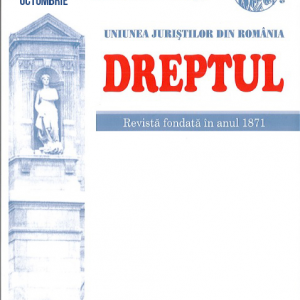 In this study, the author makes a relatively exhaustive analysis of the provisions of Articles 1221 to 1224 of the new Romanian Civil Code (Law no. 287/2009, republished on July 15, 2011 and effective since October 1st 2011) stressing the differences - substantive - between regulations on damage (as vice of consent) in the present Civil Code and in the previous Civil Code (of 1864).
In this study, the author makes a relatively exhaustive analysis of the provisions of Articles 1221 to 1224 of the new Romanian Civil Code (Law no. 287/2009, republished on July 15, 2011 and effective since October 1st 2011) stressing the differences - substantive - between regulations on damage (as vice of consent) in the present Civil Code and in the previous Civil Code (of 1864). -
 The legal liability is one of the main issues regarding the responsibility in administrative law. Therefore, the legal liability is able to exercise influence upon our society to some extent only by identifying the person responsible for ignoring the social values protected by law, in order to establish his/her liability. Let us stress upon the fact that the effectiveness of legal liability may determine, to a greater or a smaller extent, the establishment, re-establishment and even the survival of the rule of law. The society is more likely to take into consideration the legal liability, referring to the social and political background of these days, as well, if the liability is being applied to the civil servant or to an agent of public power, meaning a person who exercises a public function. What about the situation in which the person who is going to be held responsible for breaking the law and, therefore, being held liable for this fact is, directly or indirectly, even the creator of the law, being at the same time both part of the dominant fund and to the serviced/controlled fund? Does the above-mentioned situation supposes an antagonism in declaring responsible precisely the one who created the notion and, therefore, the premise of responsibility or, on the contrary, the antagonism would be precisely the irresponsibility of the entitled one, also, to create the right and to apply it, thus ensuring the protection of values, which establishes the base of its very existence?
The legal liability is one of the main issues regarding the responsibility in administrative law. Therefore, the legal liability is able to exercise influence upon our society to some extent only by identifying the person responsible for ignoring the social values protected by law, in order to establish his/her liability. Let us stress upon the fact that the effectiveness of legal liability may determine, to a greater or a smaller extent, the establishment, re-establishment and even the survival of the rule of law. The society is more likely to take into consideration the legal liability, referring to the social and political background of these days, as well, if the liability is being applied to the civil servant or to an agent of public power, meaning a person who exercises a public function. What about the situation in which the person who is going to be held responsible for breaking the law and, therefore, being held liable for this fact is, directly or indirectly, even the creator of the law, being at the same time both part of the dominant fund and to the serviced/controlled fund? Does the above-mentioned situation supposes an antagonism in declaring responsible precisely the one who created the notion and, therefore, the premise of responsibility or, on the contrary, the antagonism would be precisely the irresponsibility of the entitled one, also, to create the right and to apply it, thus ensuring the protection of values, which establishes the base of its very existence? -
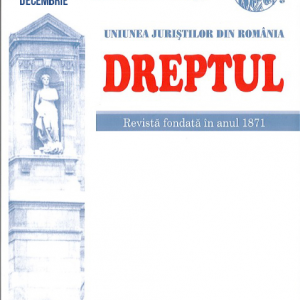 As of November 1999 to May 2011 the issue of strike was legally regulated by Law no. 168/1999 on the settlement of labor disputes, and in May 2011 by Law no. 62/2011 on social dialogue (which expressly abolished the provisions of the Law no. 168/1999 on strike). In this study, the author examines the new regulation on strike, highlighting both the provisions preserved from the previous law (no. 168/1999) and the new elements brought by Law no. 62/2011, highlighting, as the case may be, the positive or the negative aspects of Law. 62/2011.
As of November 1999 to May 2011 the issue of strike was legally regulated by Law no. 168/1999 on the settlement of labor disputes, and in May 2011 by Law no. 62/2011 on social dialogue (which expressly abolished the provisions of the Law no. 168/1999 on strike). In this study, the author examines the new regulation on strike, highlighting both the provisions preserved from the previous law (no. 168/1999) and the new elements brought by Law no. 62/2011, highlighting, as the case may be, the positive or the negative aspects of Law. 62/2011. -
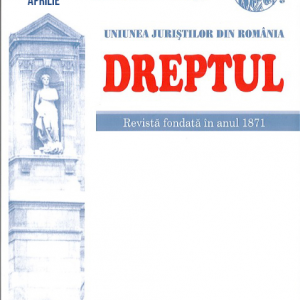 The paper presents some of the most important aspects of the individual employment contract nullity as it is set up by the regulations which are derogatory from the common law provided for in the employment law. In addition, it aims to highlight the extent to which the new regulation nullity in the current Civil Code (entered into force on October 1, 2011) would also apply to the individual employment contract, based on the rule that the provisions of the Labor Code is completed with the civil Code. The analysis performed is intended to lead to conclusions concerning the civil law rules relating to nullity, which, as they are not inconsistent with the specific employment relationship, shall also apply to the individual employment contract.
The paper presents some of the most important aspects of the individual employment contract nullity as it is set up by the regulations which are derogatory from the common law provided for in the employment law. In addition, it aims to highlight the extent to which the new regulation nullity in the current Civil Code (entered into force on October 1, 2011) would also apply to the individual employment contract, based on the rule that the provisions of the Labor Code is completed with the civil Code. The analysis performed is intended to lead to conclusions concerning the civil law rules relating to nullity, which, as they are not inconsistent with the specific employment relationship, shall also apply to the individual employment contract. -
 Intellectual work originality is the essence of copyright. But in fact, the level of assessment for the condition of originality – in consideration of granting protection – is a sensitive, fluid, controversial, and interpretable issue, etc. In the light of international and Romanian copyright legislation, this study aims to clarify a number of difficult issues, controversies regarding the literary work’s originality.
Intellectual work originality is the essence of copyright. But in fact, the level of assessment for the condition of originality – in consideration of granting protection – is a sensitive, fluid, controversial, and interpretable issue, etc. In the light of international and Romanian copyright legislation, this study aims to clarify a number of difficult issues, controversies regarding the literary work’s originality.
